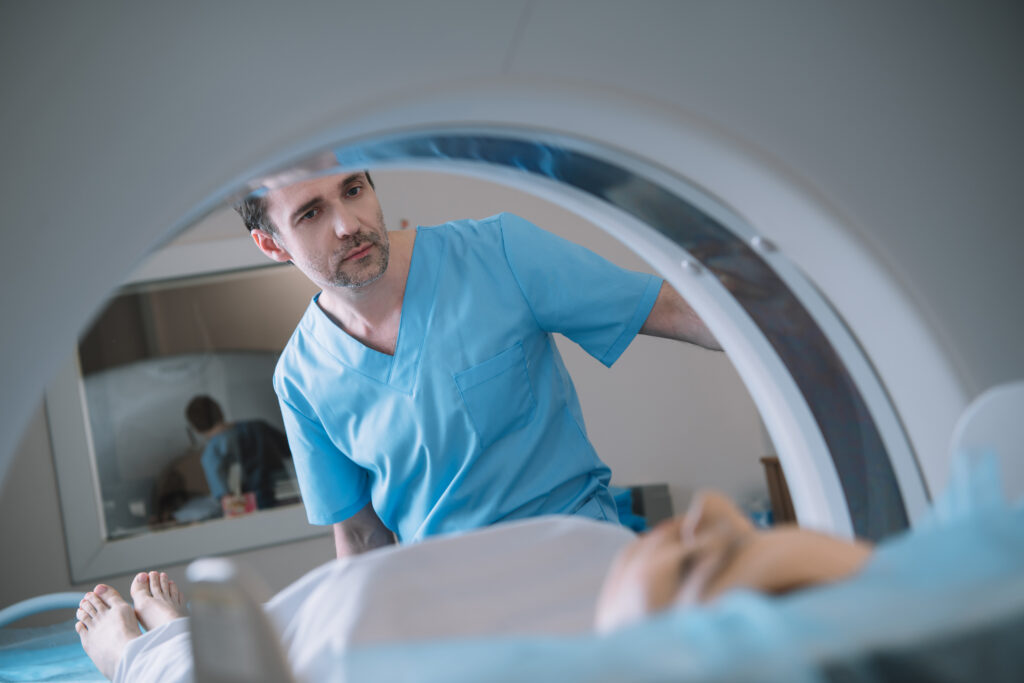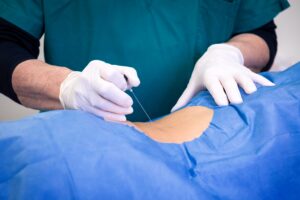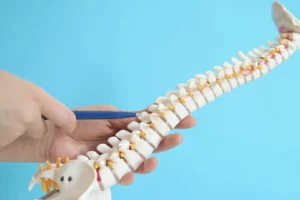Dealing with a compression fracture can be a pivotal moment in one’s life, raising concerns not just about immediate treatment but also about long-term implications, including life expectancy after a compression fracture. At The Institute for Comprehensive Spine Surgery, we understand these concerns and aim to provide clarity and hope through advanced care and support.
Understanding Compression Fractures
Compression fractures of the spine are injuries where a vertebra in the spine collapses, which is often a result of bone-thinning conditions such as osteoporosis, traumatic events, or the presence of cancerous lesions. These fractures are particularly common in older adults, with postmenopausal women at a higher risk due to the rapid bone density loss associated with osteoporosis. However, they can affect individuals at any age, especially those who experience significant impacts from falls, sports injuries, or motor vehicle accidents, which can cause sudden and intense pressure on the spine leading to fractures.
Symptoms and Diagnosis
The symptoms of a compression fracture can vary widely from person to person, often influenced by the severity of the fracture and its location on the spine. The most immediate and noticeable symptom is usually back pain, which can range from a dull, chronic ache to sharp, intense pain that worsens with movement.
In addition to pain, compression fractures can lead to a decrease in height as the affected vertebrae lose their normal stature. This height loss, combined with the structural changes in the spine, can contribute to a stooped posture, commonly referred to as a “dowager’s hump.” These physical changes can also impede mobility, flexibility, and overall quality of life, making everyday activities increasingly difficult.
Diagnosing a compression fracture involves a detailed assessment that starts with the patient’s medical history and a physical examination. Healthcare providers will inquire about recent injuries, pain levels, and any previous diagnoses of bone density conditions like osteoporosis. Imaging tests also play an important role in confirming the presence of a compression fracture. X-rays are typically the first step, offering a clear picture of the spine’s structure and highlighting any areas of compression. For a more detailed view, MRI (Magnetic Resonance Imaging) or CT (Computed Tomography) scans may be utilized, providing insights into the soft tissues, nerves, and exact extent of the damage, which are essential for developing an effective treatment plan.
Treatment Options for Compression Fractures
The approach to treating compression fractures is tailored to the individual, factoring in the severity of the fracture, the patient’s health status, and the impact of symptoms on daily life. Here are the primary treatment avenues:
Rest: Initial treatment often involves a period of rest, allowing the spine to heal and reduce the risk of further injury. This doesn’t mean complete immobility, but rather avoiding activities that exacerbate pain or put additional pressure on the spine.
Pain Medication: Over-the-counter or prescription pain relievers can play a crucial role in managing the discomfort associated with compression fractures. Nonsteroidal anti-inflammatory drugs (NSAIDs) may be used to reduce inflammation and relieve pain, making it easier for patients to engage in other aspects of their treatment plan.
Physical Therapy: Engaging in physical therapy is a cornerstone of non-surgical treatment. A physical therapist can tailor a program to strengthen the back muscles and improve posture, which helps support the spine and mitigate the risk of future fractures. Therapy may also include balance and flexibility exercises to enhance overall mobility and reduce the likelihood of falls.
Vertebroplasty: For cases where pain is persistent and significantly impacts quality of life, vertebroplasty may be recommended. This minimally invasive procedure involves injecting a special cement into the fractured vertebrae to stabilize the spine and alleviate pain. The cement hardens quickly, providing immediate support to the compromised vertebra.
Kyphoplasty: Similar to vertebroplasty, kyphoplasty will stabilize the spine and relieve pain but includes an additional step. Before the cement is injected, a small balloon is inserted and inflated to restore height to the collapsed vertebra and create a space for the cement. This procedure not only helps in pain reduction but may also improve spinal alignment and posture.

Impact on Life Expectancy
While a compression fracture itself does not directly affect life expectancy, its consequences can. Untreated or severe fractures can indirectly impact overall health and well-being. Additionally, reduced physical activity and the potential for further fractures can contribute to a decline in health over time.
Improving Quality of Life After a Compression Fracture
Recovering from a compression fracture demands a strategy aimed at healing significantly improving the quality of life post-recovery. Here’s how each element of the recovery process contributes to a fuller, healthier life after a fracture:
Pain Management: Effective pain management allows you to actively participate in rehabilitation and daily activities. It involves a regimen that may include medications, heat or ice therapy, and even acupuncture or massage, tailored to individual needs and preferences. Achieving control over pain is the first step toward regaining mobility and independence, allowing patients to engage more fully in therapeutic exercises and return to their daily routines.
Physical Therapy: Engaging in a structured physical therapy program is critical for strengthening the muscles that support the spine, improving posture, and enhancing overall mobility. These exercises are designed not just to recover from the current injury but to fortify the body against future incidents. Physical therapy often includes a mix of targeted exercises, stretching, and sometimes aquatic therapy, which can be particularly gentle on the spine while still effective in building strength and flexibility.
Lifestyle Modifications: A holistic approach to recovery involves significant lifestyle modifications to ensure the health of bones and the entire musculoskeletal system. Incorporating a diet rich in calcium and vitamin D is essential for bone health, as these nutrients play a crucial role in bone density and strength. Additionally, lifestyle changes such as quitting smoking and reducing alcohol consumption directly impact bone health, as smoking can weaken bone structure and excessive alcohol can interfere with the body’s ability to absorb calcium.
Regular Medical Check-ups: Scheduling regular appointments with healthcare providers for the management of osteoporosis or any other underlying conditions contributing to bone fragility is vital. Regular medical check-ups help monitor bone density, adjust medications if necessary, and provide an opportunity to discuss any concerns or adjustments needed in the treatment plan. These check-ups serve as a preventive measure against future fractures by ensuring that any deterioration in bone health is promptly addressed.

Take Charge of Your Recovery Today
Recovering from a compression fracture can seem daunting, but it’s an opportunity to build a stronger, healthier future. At The Institute for Comprehensive Spine Surgery, we understand the intricacies of spine health and are dedicated to guiding you through every step of your recovery. Our expert team, equipped with the latest in spine care technology and treatments, is committed to providing personalized care that addresses your specific needs.
Don’t let life expectancy after a spinal compression fracture be a concern. Whether you’re just beginning your journey to recovery or looking for ways to prevent future injuries, we’re here to offer the support, expertise, and care you need. From advanced pain management techniques to regular health check-ups, our comprehensive approach ensures you have the best possible foundation for a healthy recovery.
Take the first step towards regaining your strength, mobility, and quality of life. Reach out to The Institute for Comprehensive Spine Surgery today. Let us help you navigate your path to recovery with confidence and support. Contact us to schedule your consultation and begin the journey back to a healthier, more vibrant you. Your future self will thank you.
Compression Fracture FAQs
What Causes Compression Fractures?
Compression fractures primarily occur when one or more bones in the spine weaken and collapse, often due to conditions like osteoporosis, trauma from falls or accidents, or cancer affecting the spinal vertebrae. This weakening leads to diminished bone density or structural integrity, rendering the bones more prone to fractures from minimal stress or pressure.
What is the Life Expectancy After a Compression Fracture?
Life expectancy after a compression fracture can largely depend on the individual’s overall health, the severity of the fracture, and how well it’s managed. While the fracture itself may not directly decrease life expectancy, its indirect effects, such as reduced mobility, chronic pain, and potential for further injury, can impact overall health and quality of life. Effective management, including treatment for osteoporosis, physical rehabilitation, and lifestyle modifications, plays a crucial role in maintaining health and well-being after a fracture.
How Can I Tell If I Have a Compression Fracture?
Symptoms of a compression fracture can include sudden back pain, worsening pain upon standing or walking, decreased height, and a stooped posture. Some individuals might experience minimal symptoms, making it essential to consult a healthcare provider for a proper diagnosis through a physical examination and imaging tests like X-rays or MRI if a compression fracture is suspected.
What Are the Treatment Options for Compression Fractures?
Treatment for compression fractures may vary based on the fracture’s severity and the individual’s health but typically includes rest, pain management with medication, physical therapy to strengthen back muscles, and surgical options like vertebroplasty or kyphoplasty for more severe cases. These interventions aim to alleviate pain, stabilize the spine, and restore mobility.
Can Lifestyle Changes Improve Recovery After a Compression Fracture?
Yes, lifestyle modifications are crucial in the recovery and prevention of future fractures. Adopting a diet rich in calcium and vitamin D, quitting smoking, reducing alcohol intake, and engaging in regular, condition-appropriate physical activity can enhance bone density and overall spinal health, significantly impacting recovery and future fracture prevention.
















